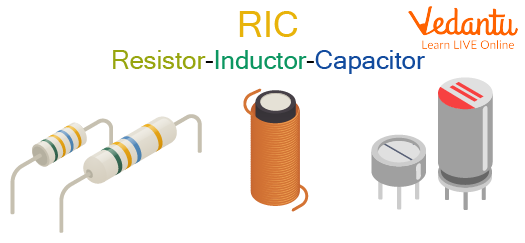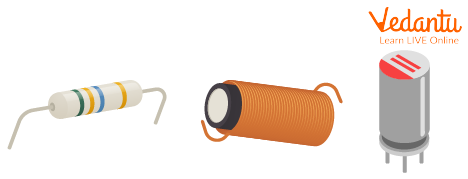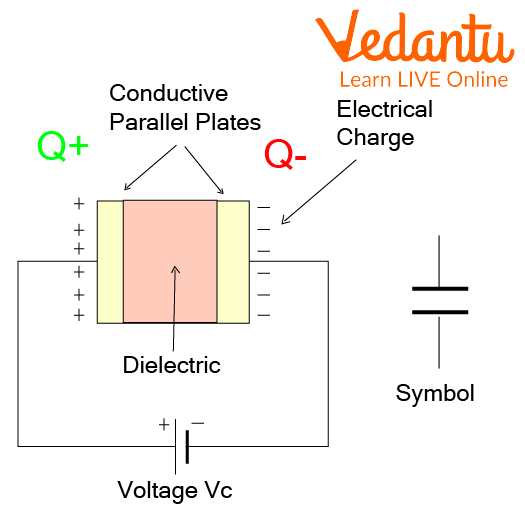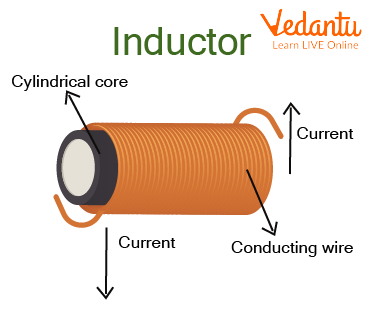




How Do Capacitors, Inductors, and Resistors Work in Circuits?
Our life is dependent on electricity from the moment we wake up until the moment we go to sleep at night. Electric current is necessary for the operation of everything from a simple bread toaster to a baking oven to a typical television. Mobile phones, the most popular gadget, use electricity to operate by charging the battery.

Introduction to Capacitor Inductor Resistor
We are aware that resistors, inductors, and capacitors are three significant passive components that are frequently employed in both electrical and electronic circuits. Capacitors, Inductor, and Resistors are the main components of most electrical and electronic circuits. You can learn more about these components by reading this article on capacitors, inductors, and resistors and knowing the differences between them.
At the end of this article, you will be able to answer questions like what is a resistor, what is an inductor, and capacitor definition.
What are Capacitor Inductor Resistors?

Capacitor Inductor Resistor
In electronic circuits, the capacitor, inductor, and resistor are the three fundamental components. Each of these has a significant impact on how an electronic circuit functions. They also use their units of measurement and standard symbols. Let us study these electronic components one by one in detail.
What is a Resistor?

A Resistor
The amount of opposition offered to an electric current is measured as resistance. An electrical component used to offer opposition is known as a resistor. Depending on the need of resistance, there are various values of resistance available. With the help of resorts, we can prevent the damage that may cause to the device with heavy currents.
The less current flows through a resistor, the more excellent resistance it has. The resistance of the resistor is measured in terms of ohms and it is denoted by a greek letter omega $\left(\omega\right)$.
Ohm's law is used to determine the value of resistance which states that voltage divided by current equals resistance in ohms, i.e.,
$Resistance = \dfrac {Voltage}{Current}$
OR
$R =\dfrac { V}{I}
In an electric circuit, a resistor is symbolised by a zigzag line, and the letter "R" is used in the equations.
Uses of Resistor
There are numerous applications for resistors. Among some examples are voltage division, heat production, matching and loading circuits, gain control, and time constant setup.
Capacitor Definition

Capacitor Diagram
Similar to how water flows, electric charges move in an electric current. Charges can be stored in the same way that water can. The capacitor is the name of the electrical component that stores electric charges.
The capacitance of a capacitor, denoted by the abbreviation "C" and measured in "Farads," is its capacity to hold a charge. A capacitor can store more electric charge the more capacitance it has.
In an electric circuit, the two parallel plates serve as a representation of capacitors. We can learn from the capacitor diagram in the above image provided.
The capacitance of a capacitor is found by the formula:
Capacitance = Charge Stored/Voltage
or
C = q/V;
where
q = stored charge
V = Voltage of the capacitor
Uses of Capacitor
Following are the uses of capacitors:
DC blocking capacitors – These capacitors only allow AC to flow through specific circuit components while blocking DC.
The main components of filters are capacitors.
A section of the circuit can be connected to another using a capacitor.
What is an Inductor?

An Inductor
The amount of inductance in a circuit is represented by an inductor and it is denoted by letter L. The ability of a component to produce electromotive force as a result of a change in the flow of current is known as inductance. The wire is looped into a coil to create a straightforward inductor. To lessen or oppose changes in electric current, inductors are utilised in electronic circuits.
An inductor appears like a wire in a DC circuit. When the current is constant, it has no effect. Only when the current is changing, like in an AC circuit, does inductance have an impact. Henrys are used to measure inductance.
Uses of Inductor
Following are the uses of an inductor:
Inductors are used in tuning circuits.
Inductors are also found in sensors.
Induction motors
Transformers
In any AC circuit inductors are used in filters. The filters in AC circuits are used to separate the frequencies.
Chokes
Summary
Energy is stored in magnetic fields by inductors, released as heat by resistances, and stored in electric fields by capacitors. Resistors impede both alternating and continuous currents because resistance is constant. We can also say that they are the three fundamental building blocks of electronics. The components that resist the flow of electric current are called resistors. Inductors are made to turn electrical power into a magnetic field. We have discussed all the necessary points related to capacitors, inductors, and resistors.
FAQs on Capacitor, Inductor & Resistor Explained with Examples
1. What are the fundamental roles of resistors, capacitors, and inductors in an electrical circuit?
These three passive components are the building blocks of most electronic circuits, each with a distinct function:
- A resistor is designed to oppose the flow of electric current, converting electrical energy into heat to control current levels.
- A capacitor stores electrical energy in an electric field. Its primary role is to resist changes in voltage.
- An inductor stores energy in a magnetic field when current flows through it. Its primary role is to resist changes in current.
2. How do the functions of a resistor, capacitor, and inductor differ in a circuit?
The primary difference lies in how they handle energy and respond to current. A resistor dissipates energy as heat and provides constant opposition (resistance) to both AC and DC. A capacitor stores energy in an electric field, effectively blocking DC current once charged but allowing AC current to pass. An inductor stores energy in a magnetic field, offering little opposition to steady DC but strongly opposing the flow of AC.
3. What are the SI units and standard circuit symbols for these components?
Each component has a unique unit of measurement and a standard symbol used in circuit diagrams:
- Resistor: The SI unit is the Ohm (Ω). Its circuit symbol is a zigzag line.
- Capacitor: The SI unit is the Farad (F). Its circuit symbol consists of two parallel lines.
- Inductor: The SI unit is the Henry (H). Its circuit symbol is a series of coils or loops.
4. What are some real-world examples of where resistors, capacitors, and inductors are used?
These components are essential in countless everyday devices:
- Resistors are used in voltage dividers, the speed controllers for fans, and to limit current to LEDs in chargers and displays.
- Capacitors are used in camera flashes for rapid energy release, in power supplies to smooth out voltage, and in audio crossovers as filters.
- Inductors are critical components in transformers, power converters, induction motors, and radio tuners to select specific frequencies.
5. Why do inductors and capacitors behave so differently in AC versus DC circuits?
Their behaviour is directly related to changes in electricity. In a DC circuit, where current and voltage are constant, an inductor acts as a simple short circuit (a wire) and a capacitor acts as an open circuit (a break), blocking current flow once fully charged. In an AC circuit, the current and voltage are constantly changing. This continuous change causes inductors and capacitors to actively and continuously oppose the flow, a property known as reactance, which is frequency-dependent.
6. How does each component oppose current, and is the mechanism the same?
No, the mechanisms are fundamentally different. A resistor opposes current through electron collisions within its material, dissipating energy as heat. This is called resistance. In contrast, capacitors and inductors do not dissipate energy in the same way. A capacitor opposes changes in voltage by storing energy in an electric field, and an inductor opposes changes in current by storing it in a magnetic field. This opposition from energy storage is called reactance, which is temporary and doesn't lose energy to heat in an ideal component.
7. Why are capacitors generally preferred for filtering high frequencies and inductors for low frequencies?
This choice is based on how their opposition (reactance) changes with frequency. A capacitor's reactance decreases as the signal frequency increases, which means it allows high-frequency signals to pass through easily while blocking low-frequency signals. Conversely, an inductor's reactance increases as frequency increases, making it effective at blocking high-frequency signals while allowing low-frequency or DC signals to pass with little opposition.









